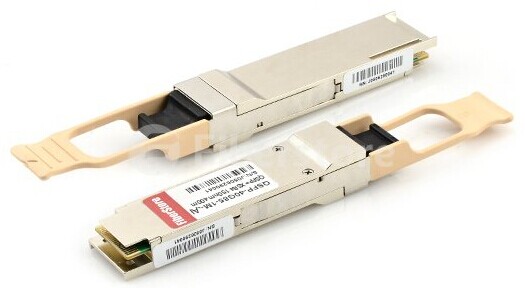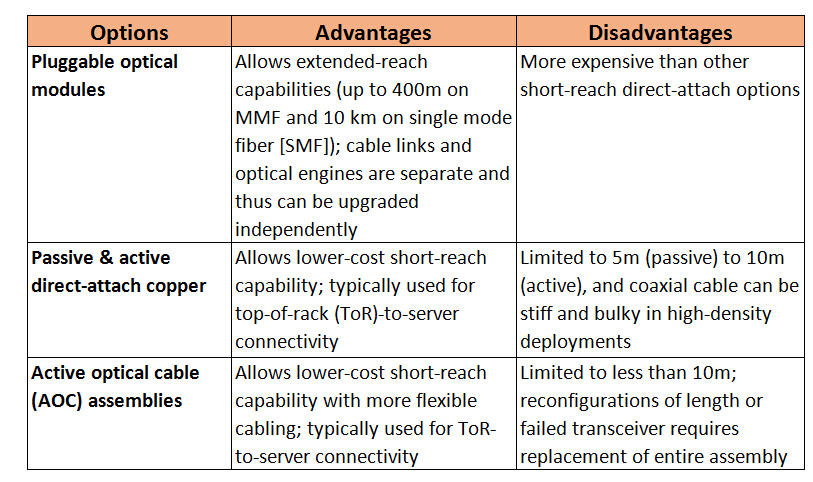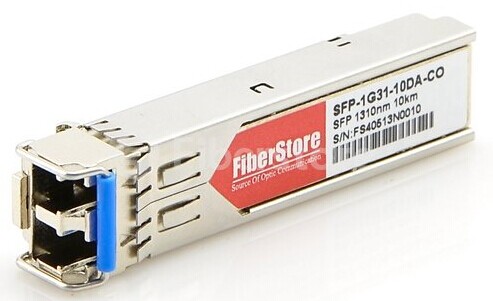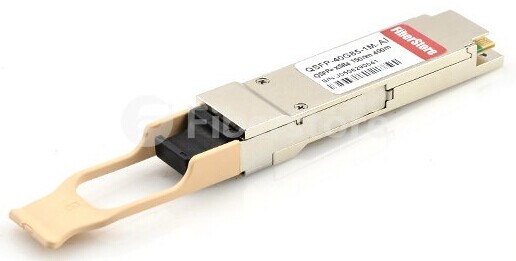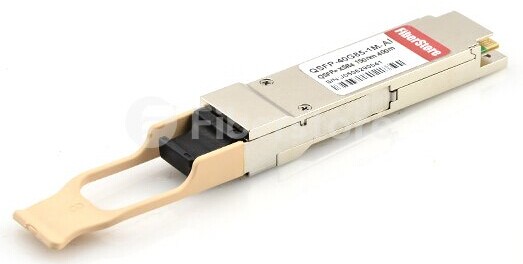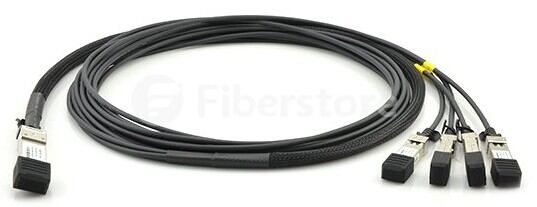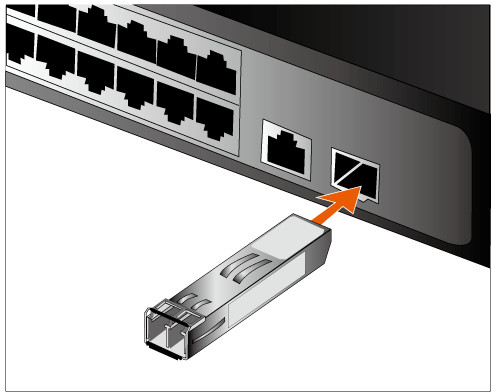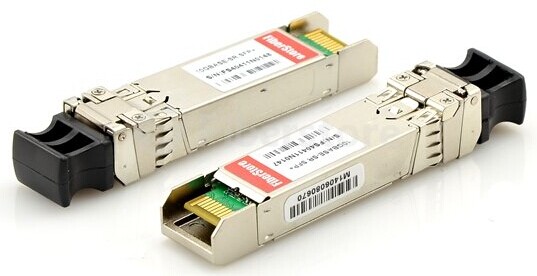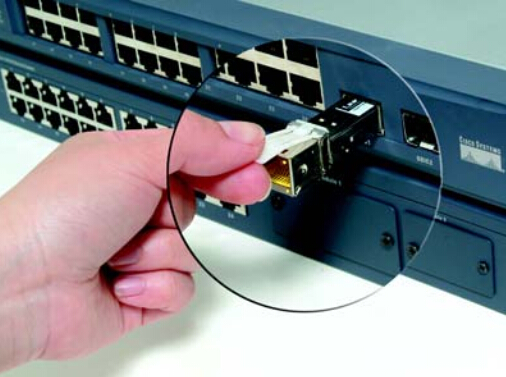10 Gigabit Ethernet or 10GbE is a group of computer networking technologies for transmitting Ethernet frames at a rate of 10 gigabits per second. Nowadays, 10 Gigabit Ethernet is gaining broader deployments by the increasing bandwidth requirements and the growth of enterprise applications. In the world of 10 Gigabit Ethernet, selecting the appropriate 10-gigabit physical media is a challenge, because 10GbE is offered in two broad categories: optical and copper. This article will introduce both optical and copper cabling options for 10 Gigabit Ethernet.
Fiber Optical Cabling
Single-mode fiber (SMF), typically with an optical core of approximately 9 μm (microns), has lower modal dispersion than multimode fiber. It is able to support distances of at least 10 km, depending on transmission speed, transceivers and the buffer credits allocated in the switches. While multimode fiber (MMF), with an optical core of either 50 μm or 62.5 μm, can support distances up to 600 m, depending on transmission speed and transceivers.
When planning data center cabling requirements, be sure to consider that a service life of 15-20 years can be expected for fiber optic cabling. Thus the cable chosen should support legacy, current and emerging data rates.
10GBASE-SR — a port type for multimode fiber, 10GBASE-SR cable is the most common type for fiber optic 10GbE cable. It is able to support an SFP+ connector with an optical transceiver rated for 10GbE transmission speed. 10GBASE-SR cable is known as “short reach” fiber optic cable.
10GBASE-LR — a port type for single-mode fiber, 10GBASE-LR cable is the “long reach” fiber optic cable. It is able to support a link length of 10 km.
OM3 and OM4 are multimode cables that are “laser optimized” and support 10GbE applications. The transmission distance can be up to 300 m and 400 m respectively.
Copper Cabling
Common types of 10GbE copper cables are as follows:
- 10GBASE-CR — the most common type of copper 10GbE cable, 10GBASE-CR cable uses an attached SFP+ connector and it is also known as a SFP+ direct attach copper (DAC). This fits into the same form factor connector and housing as the fiber optic cables with SFP+ connectors. Many 10GbE switches accept cables with SFP+ connectors, which support both copper and fiber optic cables.
- Passive and Active DAC — passive copper connections are common with many interfaces. As the transfer rates increase, passive copper does not provide the distance needed and takes up too much physical space. So the industry is moving towards an active copper type of interface for higher speed connections. Active copper connections include components that boost the signal, reduce the noise and work with smaller gauge cables, improving signal distance, cable flexibility and airflow.
- 10GBASE-T — 10GBASE-T cables are Cat6a (category 6 augmented). Supporting the higher frequencies required for 10GbE transmission, category 6a is required to reach the distance of 100 m (330 feet). Cables must be certified to at least 500 MHz to ensure 10GBASE-T compliance. Cat 6 cables may work in 10GBASE-T deployments up to 55 m (180 feet) depending on the quality of installation. Some 10GbE switches support 10GBASE-T (RJ45) connectors. 10GBASE-T offers the most flexibility, the lowest cost media, and is backward-compatible with existing 1 GbE networks.
Fiberstore Solutions for 10 Gigabit Ethernet
As one of the most professional optical manufacturers in China, Fiberstore’s solutions for 10 Gigabit Ethernet include 10G SFP+ fiber, 10G SFP+ DAC. Besides, we also supply high quality 10G transceivers, like X2-10GB-SR, SFP-10G-ZR, SFP-10G-SR, XFP-10GZR-OC192LR, etc.
